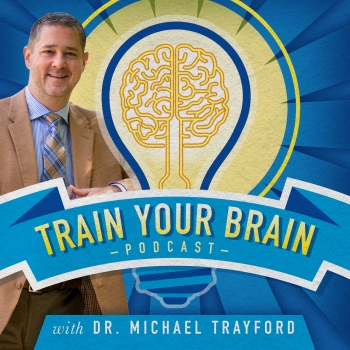Podcast: Play in new window | Download
Hello dear listeners! Dr. Trayford shares brain training tip number 140 today. This is an easy tip that you can do while you sleep! Just get nice and cozy on your side and that’s it! You’re doing it. Sleeping on your side is healthy for your brain. It helps your brain take out the trash and function properly. Thanks for listening!
Now through the end of February we are having a special contest for Train Your Brain Podcast Listeners to send in their best brain training tip for a chance to win a $25 gift card!
If you have any concerns regarding the information and applications discussed in this podcast, please consult your physician and a doctor who is experienced in functional neurology. Michael Trayford DC, DACNB is available for consultation by calling (828) 708-5274. Thanks for listening.
Jason: sleeping on my side is one of my best talents.
So many people are afflicted with poor sleep in our culture today. There is some really interesting research published by Stony Brooke University, in August 2015, which is my old stomping grounds.
The study looked at side sleeping and brain clearance, which is called the glymphatic system. Most people are familiar with the lymphatic system, which cleans toxins from the muscles and the body. The glymphatic system is basically the way to transport things out of the brain.
The most notable toxins being carried out of the brain are known as beta amyloid and tau proteins. You might be familiar with these if you read anything on Alzheimer’s or Parkinson’s disease. If these are allowed to accumulate in the brain they can cause a lot of dysfunction that leads to nerves not working too well.
A high accumulation of these proteins can choke off nerve cells, making it hard to move and think efficiently, as well as other complications.
At Stony Brook University they were looking at a certain type of MRI imaging. They started with rodents, before investing people. They were looking at lateral facing, prone and down facing and supine facing sleep. Which basically is on your back, on your side or on your stomach.
They found the ratio of CSF and ISF exchange was different on the side positions. Now CSF most people understand the fluid around the brain and spinal cord. ISF is interstitial fluid, which is the fluids between things.
The study found that more people were eliminating more of these waste products from the brain during side sleeping, as opposed to the other positions.
The cerebral spinal fluid basically exchanges with the interstitial fluid and that’s where the waste is cleared.
It’s interesting to see that many species favor side sleeping. This could in theory mean that it’s something built into our DNA. People that sleep on their back or stomach are not getting as efficient of clearance, which could lead to dementia and these other types of problems.
The Stony Brooke study is basically saying that we’re reducing our risk of these types of disease by simply sleeping on your side.
In the long term, this concept of side sleeping could prove to be even more important than the number of hours you actually spend sleeping. If we’re not getting this junk out of the brain, because it’s leading to disease.
Jason: is there a preference of one side over the other.
There’s nothing that was found in humans. There are certain animals that need to sleep on one side other than the other. Humans are designed to be symmetrically bilateral. So there isn’t anything that shows an immediate preference.
Links for this episode:
Remember, helmets can protect your brain! Please click here to learn more about helmets
Learn more at APEX Brain Centers.com
Read the APEX Brain Centers BLOG
Follow us on Facebook
On Google Plus
Follow APEX Brain Centers on Twitter
And here is the Twitter handle for this podcast: @BrainPodcast365
Visit our YouTube Channel

